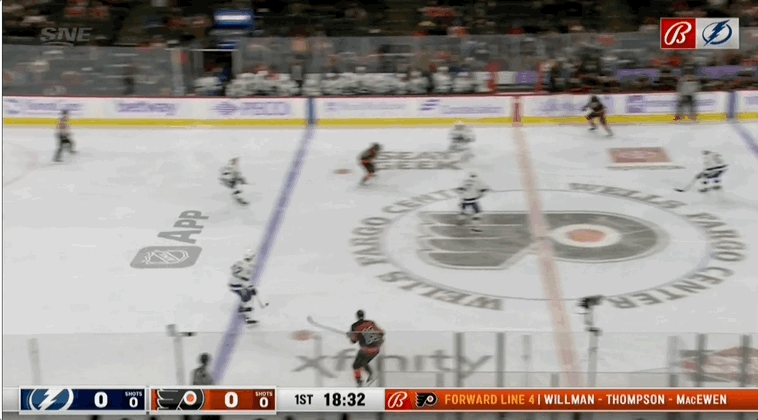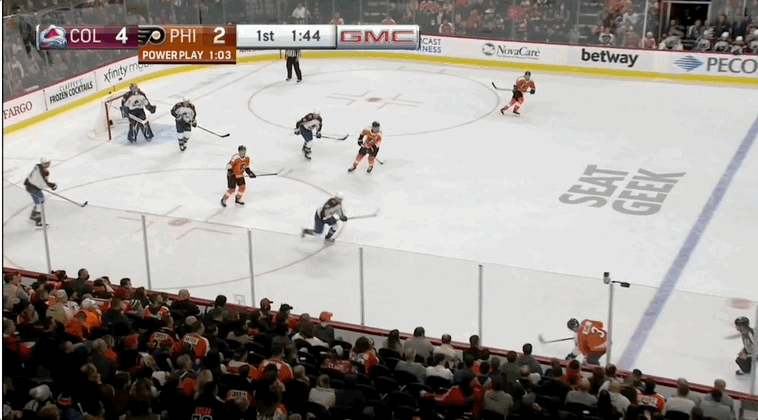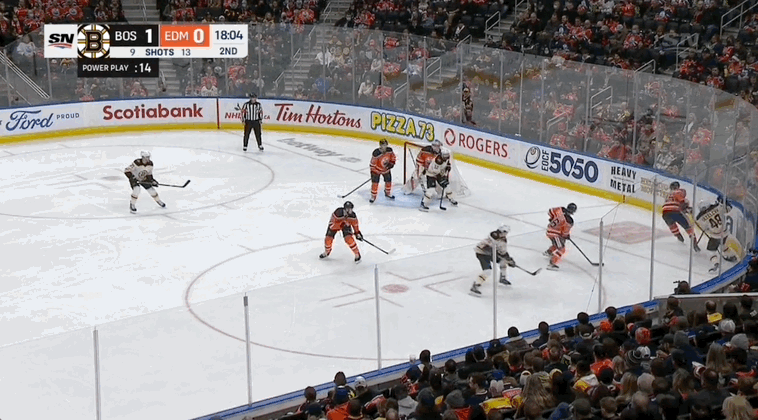With the trade deadline inching closer and the "mini-deadline" nearing, as reported by Jeff Marek in last week’s Rink Fries, there’s more focus on players who could be on the move.
What might those trade candidates bring to an acquiring team? We’ve covered a few defenders already, so now let’s look at three forwards on the block.
Claude Giroux
In the final year of his contract, the Philadelphia Flyers could move their captain to a playoff team in need of a boost up front; Giroux will have some control over his next move seeing as he has a no-movement clause.
With a player like Giroux, there are two key pieces of context needed to assess him as a trade piece: his age and his surroundings.
An acquiring team is getting 34-year-old Giroux, not the 30-year-old who put up 102 points in 2017-18 or even 85 in 2018-19. He isn’t the same scorer he once was at this phase in his career. That said, the Flyers are a disaster. So getting him into a new, more successful environment should put him in a better position to succeed than anything he’s been in this year.
Just going back to last season shows the complete player he can still be, even at centre after struggling there, at times, in previous seasons. There’s still that top-six capability, but he’s not the star on a team anymore, like he’s still had to be on the Flyers; he’s currently their leader in scoring rate with 2.7 points per 60 through 38 games. Luckily on a contender, he won’t have to be that, and will likely have more support around him.
In Giroux, an acquiring team gets some versatility in that he can slot into any forward position. If at centre, they gain a player who's strong at the dot. The veteran still has positive impacts on both ends of the ice at even strength.

Offensively, his strengths stem from both his shooting and passing.
He isn’t shooting as much as years past, but he's still more than willing to fire the puck.
Though not at the levels of years past, Giroux has an effective shot and will rip a dangerous one-timer in power-play situations.

At five-on-five, he’s not going to be the primary puck carrier on a line, although, when he does enter the zone with control, it generally is followed by a successful play.
And the Flyers’ captain can help set up his teammates with some key puck distribution to the slot.
Tomas Hertl
Hertl is one of the best all-around forwards who could be on the move come the deadline — if the San Jose Sharks don’t extend him.
The price for the pivot is going to be high, both in terms of trade return and his next contract, because he’s such an effective player on both sides of the puck.
In his own zone, he can limit shots against, block passes and recover loose pucks to turn a play around. That translates to both five-on-five opportunities and the penalty kill. Hertl doesn’t lead the team in usage in those situations, but he makes the most of his time as he can be counted on to be defensively responsible and disrupt opponents’ power plays — that helps the Sharks generate more short-handed shots when he’s on the ice.
On the other end of the ice, Hertl’s a positive influence in the offensive zone. His shot rate decreased last year, but he maintained his positive impact. This year, he’s back to shooting at a more frequent pace. Most of those shots are concentrated to the home plate area in front of the crease, both at even strength and on the power play.
At five-on-five, Hertl’s attempted scoring chances from the slot are the second-best rate in San Jose with 8.33 per 60. Those scoring chances come in a variety of ways; he can create offence off the rush or cycle better than most in San Jose. That contributes to him having the second-best individual expected goal rate for (.98 per 60), second only to Timo Meier.

Plus, he can move the puck around in the offensive zone — he rates highly in his attempts and even better in effectiveness, with over 70 per cent of his passes connecting.
With 2.73 points per 60 in all situations, Hertl is collecting points at the best rate of his career and scoring goals. He’s outscoring expectations by 4.6 goals, before accounting for shooting talent, while shooting at an above average 17.4 percent clip.
That could be a red flag for sustainability to a new team. But on a contender with more high calibre players, it could help him maintain scoring close to this pace.
Jake DeBrusk
The Boston Bruins’ winger has been on the trade block for some time, but Marek reported Saturday night the New York Rangers had inquired about him.
Unlike the aforementioned forwards, DeBrusk isn’t a pending unrestricted free agent — he’s going to be a restricted free agent with his two-year contract carrying a $3.675 million AAV expiring. And he’s younger at 25 years old. But he isn’t nearly as accomplished as the other two; Giroux who is nine years older has bonafide top-six capabilities, while Hertl’s a top-line centre. DeBrusk fits closer to middle-six calibre right now.
The Bruins’ offensive generation doesn’t see a boost when the winger is deployed. It’s not for a total lack of trying, though. With DeBrusk’s game, there are some highlights of quality over quantity — he’s not the most frequent shooter or passer.
He can, however, be efficient in his attempts. At five-on-five, he leads the Bruins in shots on goal from the slot with a rate of 5.42 per 60; of his attempts, 76.1 reach the net.

While he’s not going to move the puck around as much as some of his teammates, he does successfully set up his teammates with his passes to the slot. And on the other end of the ice, Boston allows fewer shots and scoring chances against while he’s deployed at five-on-five.
What may help DeBrusk’s case is his latest stretch of play. Alongside Charlie Coyle and Oskar Steen on the third line, the trio has earned an almost 65 per cent expected goals rate. Strong underlying play often leads to scoring, which could boost the winger’s trade value after slipping in recent seasons.
DeBrusk’s best scoring season came in 2017-18 when he tallied 43 points in 70 games; even after accounting for minutes played, that still stands above the rest with a scoring rate of 2.56 points per 60. Last year, on the other hand, was a career-low with a pace of 1.38 points per 60; this season he’s slightly ahead by .31 points per 60.
Even when accounting for a drop-off in power-play time these last two years, his scoring still has slipped at five-on-five to reflect the same trend. His impact, finishing, and ice time have all trended in the wrong direction the last couple of seasons, as he’s struggled to find consistency and show more than just glimpses of his skill.
Data via Sportlogiq.
